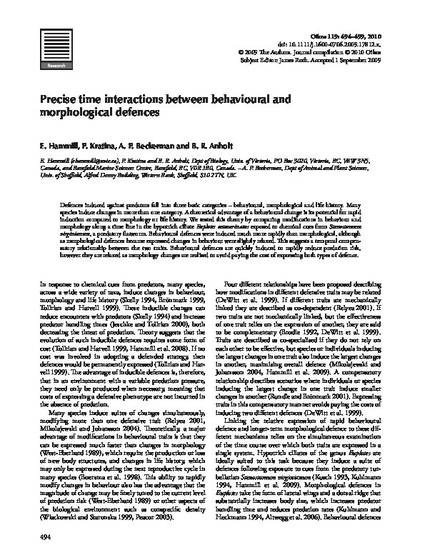
Article
Precise time interactions between behavioural and morphological defences
Oikos
(2010)
Abstract
Defences induced against predators fall into three basic categories – behavioural, morphological and life history. Many species induce changes in more than one category. A theoretical advantage of a behavioural change is its potential for rapid induction compared to morphology or life history. We tested this theory by comparing modifications in behaviour and morphology along a time line in the hypotrich ciliate Euplotes octocarinatus exposed to chemical cues from Stenostomum virginianum, a predatory flatworm. Behavioural defences were induced much more rapidly than morphological, although as morphological defences became expressed changes in behaviour were slightly relaxed. This suggests a temporal compensatory relationship between the two traits. Behavioural defences are quickly induced to rapidly reduce predation risk, however they are relaxed as morphology changes are realised to avoid paying the cost of expressing both types of defence.
Disciplines
Publication Date
2010
DOI
https://doi.org/10.1111/j.1600-0706.2009.17812.x
Citation Information
Edd Hammill. "Precise time interactions between behavioural and morphological defences" Oikos Vol. 119 Iss. 3 (2010) p. 494 - 499 Available at: http://works.bepress.com/edd-hammill/57/
